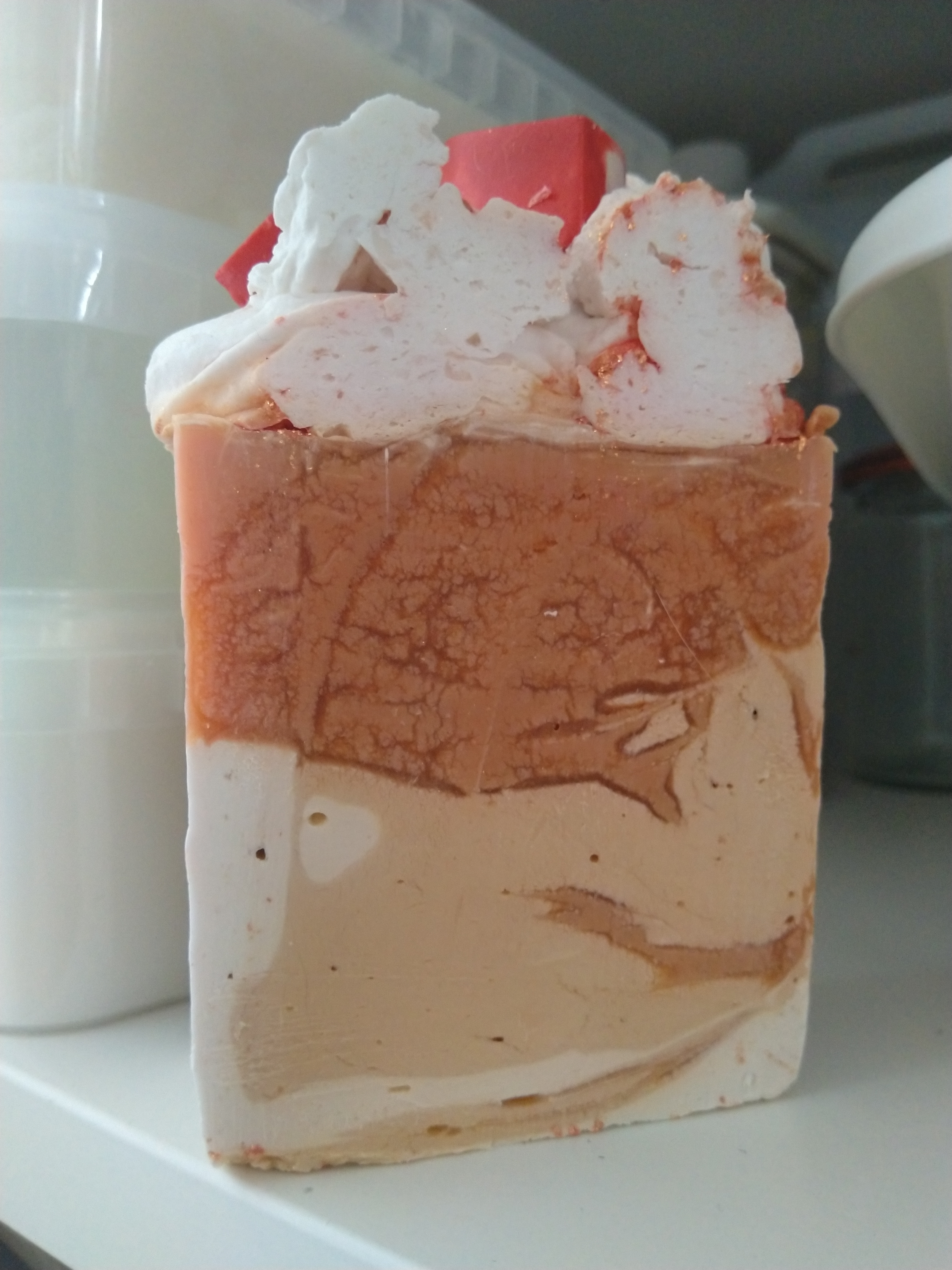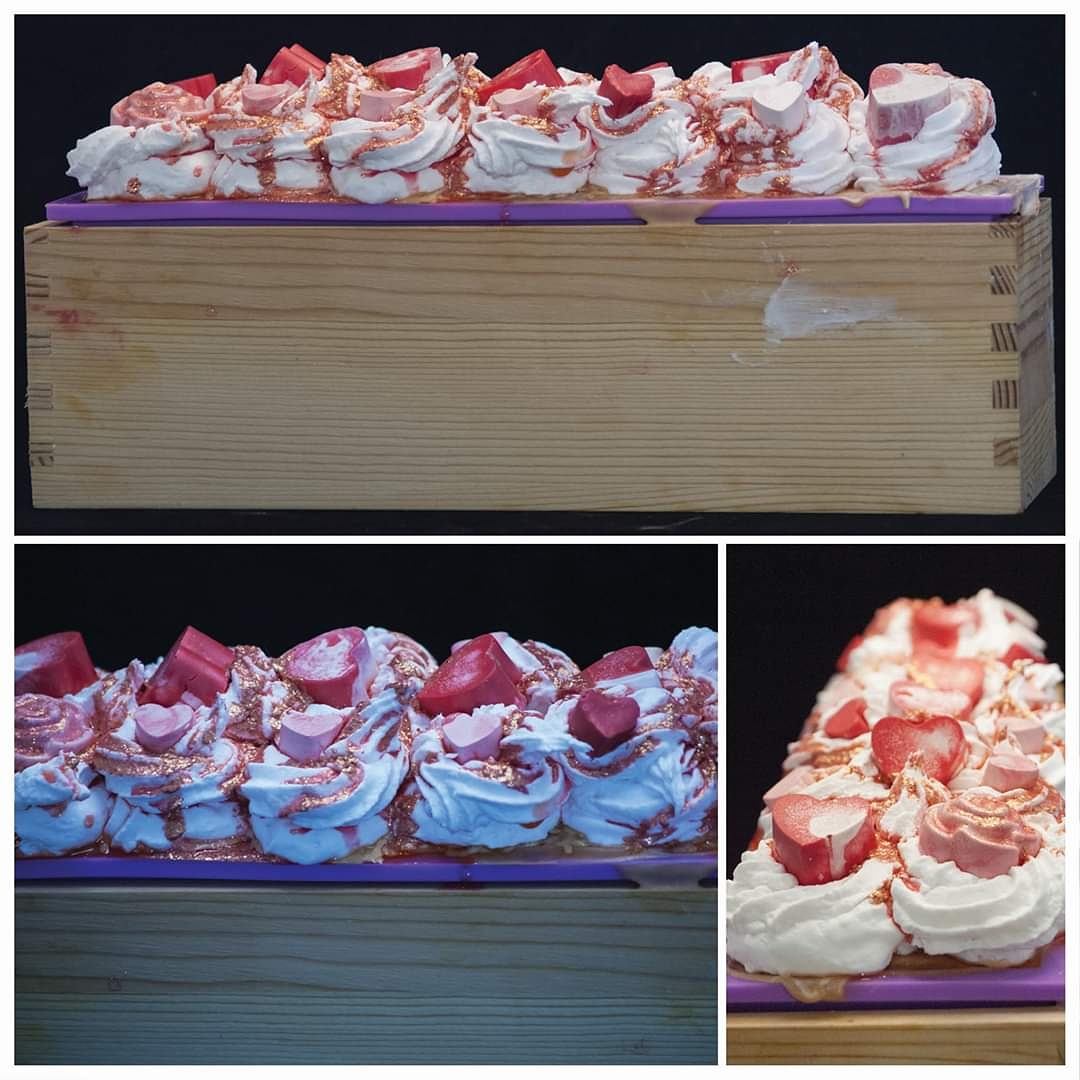TheDebby
Well-Known Member
Hello everyone!
I would like to ask some advice about the recipe I've used for my latest batch of soap.
After two weeks of waiting I still had a lot of trouble getting it out of the mold.
Once out of the mold I still had to wait a week or so to be able to cut.
Also I got either some glycerin rivers or something else happened.
I'll add a picture so if someone would be so kind maybe you could diagnose what really has happened.
(On top is a mixture of MP soap and bath butter, next time I'll probably would want to CP use soap for the same effect)


10 % superfat
27% lye
So far I've been thinking about maybe using some more coconut oil.
Also I think that using a lye solution with a stronger concentration might help.
But all tips and advice are more than welcome!
Thanks for reading and thinking with me,
- Debby
*Edit I'm planning on buying sodium lactate to use in the future when I make soap.
If anyone happens to know a good website that delivers to the Netherlands that would be great!
**Edit: I've used mica for the color and TD dissolved in almond oil.
Also I've run out of apricot seed oil I'm planning on not using it for now.
*** Edit: Took typo out of title
I would like to ask some advice about the recipe I've used for my latest batch of soap.
After two weeks of waiting I still had a lot of trouble getting it out of the mold.
Once out of the mold I still had to wait a week or so to be able to cut.
Also I got either some glycerin rivers or something else happened.
I'll add a picture so if someone would be so kind maybe you could diagnose what really has happened.
(On top is a mixture of MP soap and bath butter, next time I'll probably would want to CP use soap for the same effect)


10 % superfat
27% lye
| 60 % | Olive oil | 600 gram |
| 20 % | Coconut oil | 200 gram |
| 10 % | Castor oil | 100 gram |
| 10 % | Apricot seed oil | 100 gram |
So far I've been thinking about maybe using some more coconut oil.
Also I think that using a lye solution with a stronger concentration might help.
But all tips and advice are more than welcome!
Thanks for reading and thinking with me,
- Debby
*Edit I'm planning on buying sodium lactate to use in the future when I make soap.
If anyone happens to know a good website that delivers to the Netherlands that would be great!
**Edit: I've used mica for the color and TD dissolved in almond oil.
Also I've run out of apricot seed oil I'm planning on not using it for now.
*** Edit: Took typo out of title
Last edited:






















































